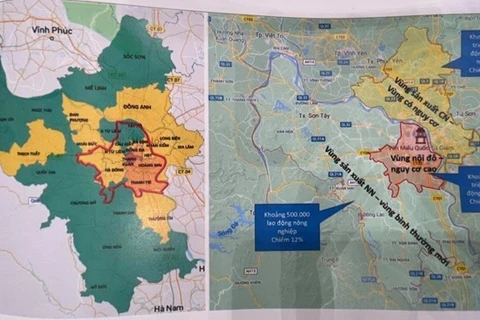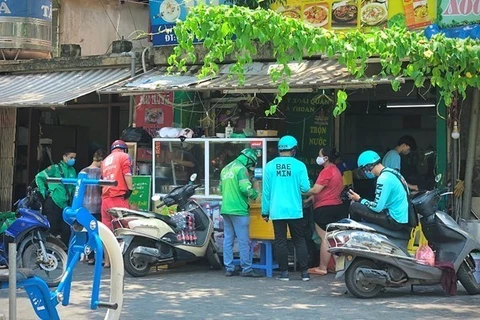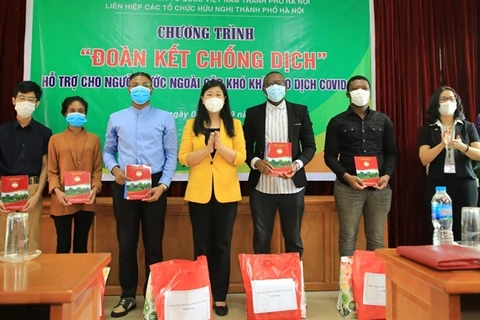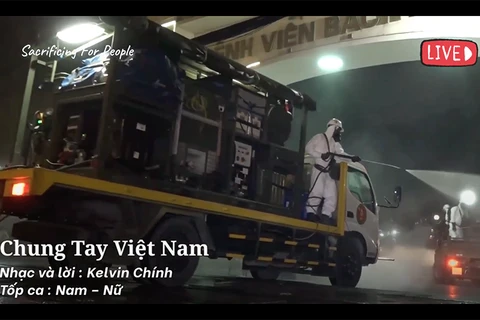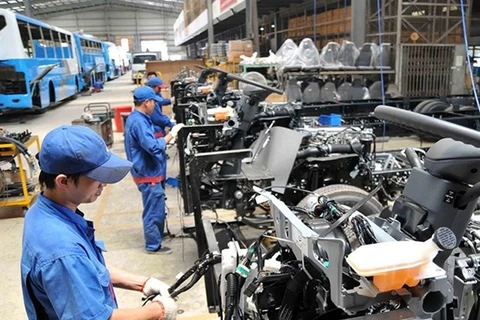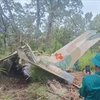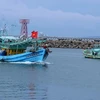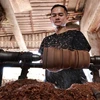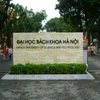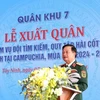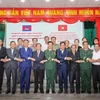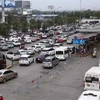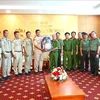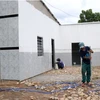Hanoi (VNA) - As social distancing measures continue in Hanoi and from this week measures have been loosened in some parts of the city, people who have been vaccinated are questioning the possibilities for travel and work.
Talking to local media on September 5, Secretary of the municipal Party Committee Dinh Tien Dung said that the city had asked for detailed guidelines from the Ministry of Health on the issue.
As of September 4, the Ministry of Health has allocated over 2.9 million vaccine doses in the capital but it has received only 2.4 million so far.
The city’s health sector can administer up to 200,000 doses per day, and more than 2.2 million doses have been administered in total, 26.65 percent of its population.
The city is planning to ramp up the vaccination in the last three months of this year when it is possibly allocated with a higher amount of vaccines, Dung said, adding that the city’s vaccination capacity could be heightened.
Heath authorities and agencies in Hanoi were asked to make sufficient preparation for COVID-19 vaccination in the city so the process could be organised safely, effectively and timely, he said.
From September 6 until September 21, the city is also ramping up testing, he added.
People in locked-down areas or health quarantine areas in “very high-risk zones” (red zones) will be tested every two or three days. Those who live in “high-risk zones” (orange zones) will be tested every five to seven days.
Families living in COVID-19 free areas (green zones) will have one or two members tested regularly as a way to protect the zones from coronavirus.
“As the COVID-19 vaccination rate in Hanoi is still low, it’s a must for people to strictly implement preventive measures, particularly social distancing orders in high-risk areas,” Dũng said.
The city had proposed the Government allow local authorities to decide the health quarantine period for people who are suspected of having SARS-CoV-2 (known as F1).
The city has asked for more vaccines to be allocated by the middle of this month so that the city can increase its vaccination rate.
The city’s authority also asked for the health ministry's detailed guidelines about travel, work and participation in COVID-19 prevention and control for fully vaccinated people.
From September 6 to 21, Directive 16 will continue to be implemented in 10 inner districts: Tay Ho, Ba Dinh, Cau Giay, Hoan Kiem, Dong Da, Hai Ba Trung, Thanh Xuan, Ha Dong, Thanh Tri and Hoang Mai, and parts of five other districts on the outskirts of the capital, Nam Tu Liem, Bac Tu Liem, Hoai Duc, Thanh Oai and Thuong Tin.
Classified as red zones (Zone 1), these areas are deemed high-risk urban areas with high population density, concentrated with agencies, businesses and services establishments.
People living in red zones must follow Directive 16, which means no gatherings of more than two people in public, people only leaving home for emergencies such as buying food and medicine, and only working in factories, production facilities and businesses that involve "essential" goods and services.
Hanoi will tighten the check travel permits from September 8. A new form of travel permits using QR codes will be put into use on September 8, which is required to go through checkpoints that separate Zone 1 and other zones (orange and green) which have lower risk of COVID-19 infections.
Dung said that the police was responsible for granting travel permits to organisations, enterprises and individuals in red zones.
He called on organisations and enterprises to re-organise their operations with further online working and reduced in-person activities.
The capital has been applying social distancing measures under Directive 16 since July 24.
As of September 5, the capital had recorded a total of 3,580 COVID-19 cases since April 29./.
Talking to local media on September 5, Secretary of the municipal Party Committee Dinh Tien Dung said that the city had asked for detailed guidelines from the Ministry of Health on the issue.
As of September 4, the Ministry of Health has allocated over 2.9 million vaccine doses in the capital but it has received only 2.4 million so far.
The city’s health sector can administer up to 200,000 doses per day, and more than 2.2 million doses have been administered in total, 26.65 percent of its population.
The city is planning to ramp up the vaccination in the last three months of this year when it is possibly allocated with a higher amount of vaccines, Dung said, adding that the city’s vaccination capacity could be heightened.
Heath authorities and agencies in Hanoi were asked to make sufficient preparation for COVID-19 vaccination in the city so the process could be organised safely, effectively and timely, he said.
From September 6 until September 21, the city is also ramping up testing, he added.
People in locked-down areas or health quarantine areas in “very high-risk zones” (red zones) will be tested every two or three days. Those who live in “high-risk zones” (orange zones) will be tested every five to seven days.
Families living in COVID-19 free areas (green zones) will have one or two members tested regularly as a way to protect the zones from coronavirus.
“As the COVID-19 vaccination rate in Hanoi is still low, it’s a must for people to strictly implement preventive measures, particularly social distancing orders in high-risk areas,” Dũng said.
The city had proposed the Government allow local authorities to decide the health quarantine period for people who are suspected of having SARS-CoV-2 (known as F1).
The city has asked for more vaccines to be allocated by the middle of this month so that the city can increase its vaccination rate.
The city’s authority also asked for the health ministry's detailed guidelines about travel, work and participation in COVID-19 prevention and control for fully vaccinated people.
From September 6 to 21, Directive 16 will continue to be implemented in 10 inner districts: Tay Ho, Ba Dinh, Cau Giay, Hoan Kiem, Dong Da, Hai Ba Trung, Thanh Xuan, Ha Dong, Thanh Tri and Hoang Mai, and parts of five other districts on the outskirts of the capital, Nam Tu Liem, Bac Tu Liem, Hoai Duc, Thanh Oai and Thuong Tin.
Classified as red zones (Zone 1), these areas are deemed high-risk urban areas with high population density, concentrated with agencies, businesses and services establishments.
People living in red zones must follow Directive 16, which means no gatherings of more than two people in public, people only leaving home for emergencies such as buying food and medicine, and only working in factories, production facilities and businesses that involve "essential" goods and services.
Hanoi will tighten the check travel permits from September 8. A new form of travel permits using QR codes will be put into use on September 8, which is required to go through checkpoints that separate Zone 1 and other zones (orange and green) which have lower risk of COVID-19 infections.
Dung said that the police was responsible for granting travel permits to organisations, enterprises and individuals in red zones.
He called on organisations and enterprises to re-organise their operations with further online working and reduced in-person activities.
The capital has been applying social distancing measures under Directive 16 since July 24.
As of September 5, the capital had recorded a total of 3,580 COVID-19 cases since April 29./.
VNA

